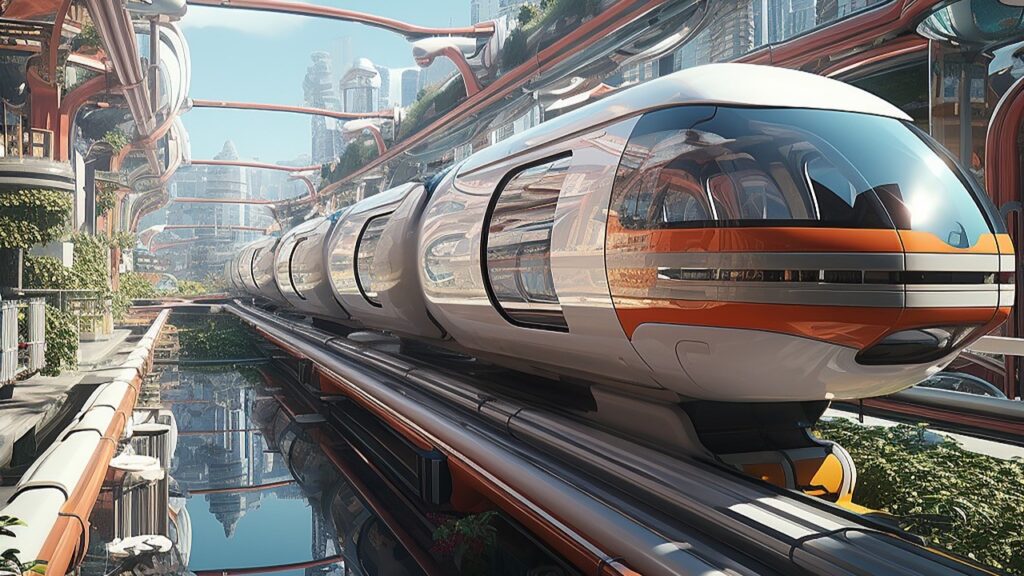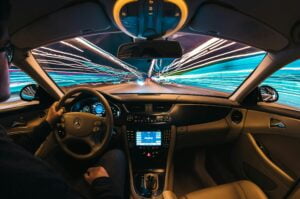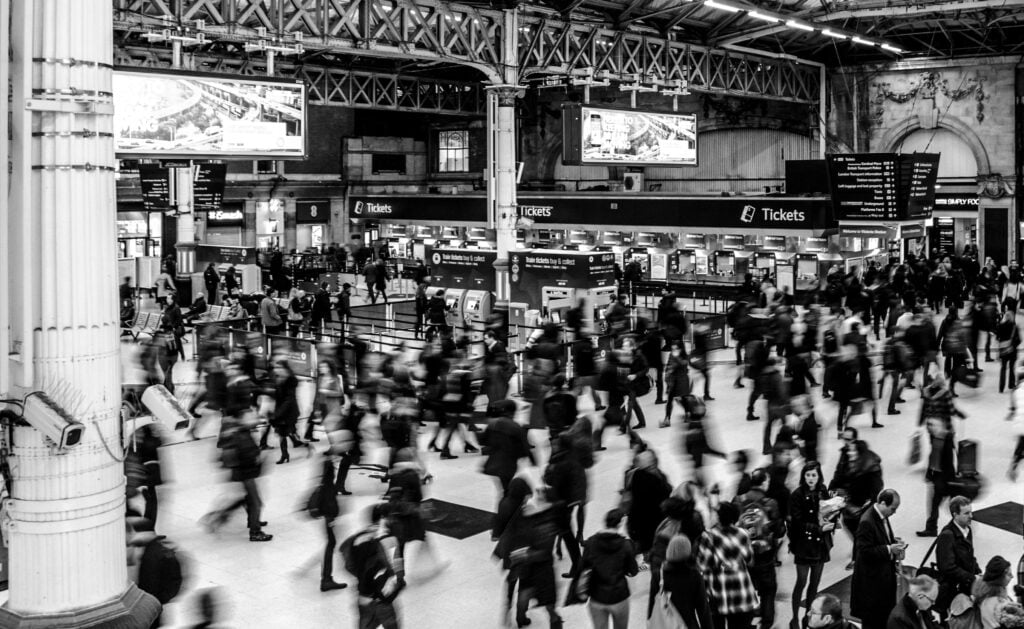
As we enter the 21st century, the need for faster, more efficient, and sustainable transportation options has become increasingly evident. The Hyperloop, a concept first proposed by Elon Musk, has gained significant attention and is seen by many as a potential game-changer in the world of transportation. The Hyperloop is a high-speed transportation system that uses a network of low-pressure tubes to transport passengers and cargo at speeds of up to 700 miles per hour.
Imagine being able to travel from Los Angeles to San Francisco in just 30 minutes, or from New York to Washington D.C. in under an hour. The Hyperloop has the potential to make these dreams a reality. By eliminating the need for traditional wheels and instead using magnetic levitation and low-pressure environments, the Hyperloop can achieve speeds that were once thought to be impossible.
Not only would the Hyperloop revolutionize long-distance travel, but it could also have a significant impact on urban transportation. With the ability to transport passengers and cargo underground, the Hyperloop could alleviate congestion on our roads and reduce the carbon emissions associated with traditional modes of transportation.
But the Hyperloop is not the only concept that could shape the future of transportation. Flying cars, once the stuff of science fiction, are now being developed by companies like Uber and Airbus. These vertical takeoff and landing (VTOL) vehicles have the potential to completely change the way we think about commuting.
Imagine being able to bypass traffic by simply taking to the skies. Flying cars could offer a new level of convenience and flexibility, allowing people to travel directly from their homes to their destinations without the need for multiple modes of transportation. This could drastically reduce travel times and make commuting more efficient.
However, there are still many challenges to overcome before flying cars become a reality. Issues such as air traffic control, infrastructure development, and safety regulations need to be addressed. But with advancements in technology and the growing interest in urban air mobility, it is not unrealistic to think that flying cars could become a common sight in the not-too-distant future.
The future of transportation holds exciting possibilities. From the Hyperloop’s high-speed travel to the convenience of flying cars, we are on the brink of a transportation revolution. These concepts have the potential to not only make travel faster and more efficient but also to reduce our impact on the environment. The future is bright for transportation, and we can’t wait to see what comes next.
Another important aspect to consider when it comes to flying cars is the infrastructure required to support their operation. Unlike traditional cars, flying cars would need designated landing and takeoff areas, commonly referred to as “vertiports.” These vertiports would serve as hubs where flying cars can land, recharge, and take off again.
Furthermore, the development of flying cars has the potential to revolutionize transportation as we know it. With the ability to bypass traffic congestion on the ground, flying cars could significantly reduce travel times, especially in urban areas. This could have a profound impact on commuting, allowing people to live further away from their workplaces without sacrificing precious time stuck in traffic.
Moreover, flying cars could also have implications for emergency services and disaster response. In situations where roads are blocked or inaccessible, flying cars could be deployed to quickly transport medical personnel, supplies, and equipment to affected areas. This could potentially save countless lives and improve the efficiency of emergency response efforts.
However, despite the exciting prospects that flying cars offer, there are still numerous challenges that need to be overcome before they become a common sight in the skies. One of the biggest hurdles is the cost. The development and production of flying cars are currently expensive, making them inaccessible to the general public. Additionally, there are concerns about the noise pollution and the impact on the environment that flying cars may have.
Nevertheless, with the rapid pace of technological advancements and the increasing interest in flying cars, it is only a matter of time before they become a reality. As more companies invest in research and development, and as regulations are put in place to ensure safety and efficiency, we may soon find ourselves living in a world where flying cars are a common mode of transportation.
The Benefits and Challenges of Futuristic Transportation
Both Hyperloop and flying cars offer exciting possibilities for the future of transportation. However, they also come with their own set of benefits and challenges.
One of the main advantages of Hyperloop is its speed. With travel times significantly reduced, it could revolutionize the way we commute and connect cities. Additionally, the use of magnetic levitation technology means that the Hyperloop would produce zero emissions, making it a more sustainable mode of transportation compared to traditional methods.
On the other hand, the development of an Hyperloop network would require significant infrastructure investments and regulatory approvals. Building the necessary tubes and stations would be a massive undertaking, and ensuring the safety and security of the system would be paramount.
Similarly, flying cars offer the potential to alleviate traffic congestion and reduce travel times, especially in urban areas. Imagine being able to bypass rush hour traffic by taking to the skies. Flying cars could also provide a lifeline in emergency situations, allowing for quick and efficient transportation of people and supplies.
However, there are several challenges that need to be addressed before flying cars can become a reality. Airspace management, noise pollution, and public acceptance are just a few of the hurdles that need to be overcome. Additionally, the cost of flying cars and the infrastructure required to support them could be significant barriers to widespread adoption.
Despite these challenges, the potential benefits of futuristic transportation are immense. Hyperloop and flying cars have the potential to transform the way we live and work, making our cities more connected and accessible. Imagine a future where commuting long distances is no longer a hassle, where traffic congestion is a thing of the past, and where emergency response times are drastically reduced.
With the advent of autonomous technology, these futuristic transportation options could become even more efficient and safe. Imagine an Hyperloop system that operates seamlessly without the need for human operators or flying cars that navigate through the air with precision, avoiding collisions and ensuring the safety of passengers.
Furthermore, the environmental benefits of futuristic transportation cannot be overstated. With zero emissions and reduced reliance on fossil fuels, these modes of transportation could play a significant role in combating climate change and improving air quality in our cities.
However, it is essential to approach the development and implementation of futuristic transportation with caution. Careful planning, extensive research, and collaboration between government, industry, and communities will be crucial to ensure that these technologies are safe, efficient, and accessible to all.
In conclusion, the benefits and challenges of futuristic transportation are intertwined. While the potential advantages are exciting, there are significant hurdles to overcome. Addressing these challenges will require a collective effort and a commitment to innovation and sustainability. With careful planning and investment, the future of transportation holds great promise for a more connected, efficient, and sustainable world.
One of the most exciting possibilities for the future of transportation is the development of autonomous vehicles. These self-driving cars have the potential to revolutionize the way we travel, offering increased safety, reduced congestion, and improved efficiency. With advancements in artificial intelligence and sensor technology, autonomous vehicles are becoming more reliable and capable of navigating complex road conditions.
Imagine a world where you can sit back and relax during your daily commute, while your car takes care of the driving. You could use that time to catch up on work, read a book, or simply enjoy the scenery. Autonomous vehicles could also have a significant impact on the environment, as they would be able to communicate with each other and optimize traffic flow, reducing fuel consumption and emissions.
Another exciting development on the horizon is the concept of flying cars. While it may sound like something out of a science fiction movie, companies like Uber and Airbus are already working on prototypes and conducting test flights. Flying cars have the potential to alleviate traffic congestion by taking to the skies, allowing people to travel quickly and efficiently between cities.
However, there are still many challenges to overcome before flying cars become a reality. Issues such as air traffic control, infrastructure, and safety regulations need to be addressed to ensure the safe integration of flying cars into our existing transportation systems. Nevertheless, the progress made so far is promising, and it’s only a matter of time before we see flying cars soaring through the skies.
But perhaps the most ambitious transportation concept of all is the Hyperloop. Proposed by Elon Musk, the Hyperloop is a high-speed transportation system that uses a network of low-pressure tubes to transport passengers and cargo at speeds of up to 700 miles per hour. This revolutionary concept could drastically reduce travel times, making it possible to commute between cities in a matter of minutes.
Several companies, including Virgin Hyperloop and SpaceX, are currently working on developing and testing Hyperloop prototypes. The technology behind the Hyperloop is complex and requires significant investment, but if successful, it could transform the way we travel, connecting cities and regions in ways that were previously unimaginable.
As we look to the future, it’s clear that transportation is on the brink of a major transformation. Whether it’s through the development of autonomous vehicles, flying cars, or the Hyperloop, the way we move from one place to another is set to change dramatically. The possibilities are endless, and the future is within reach.






